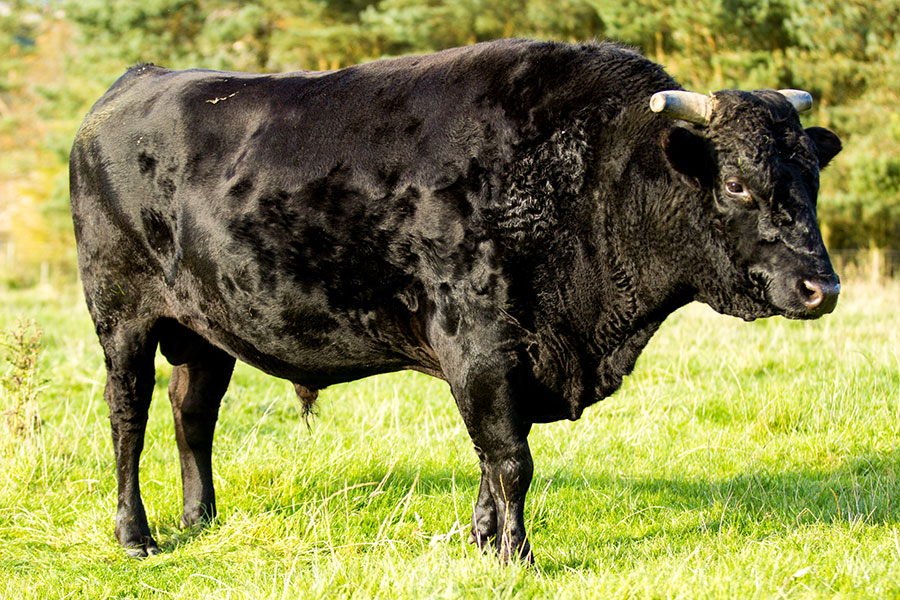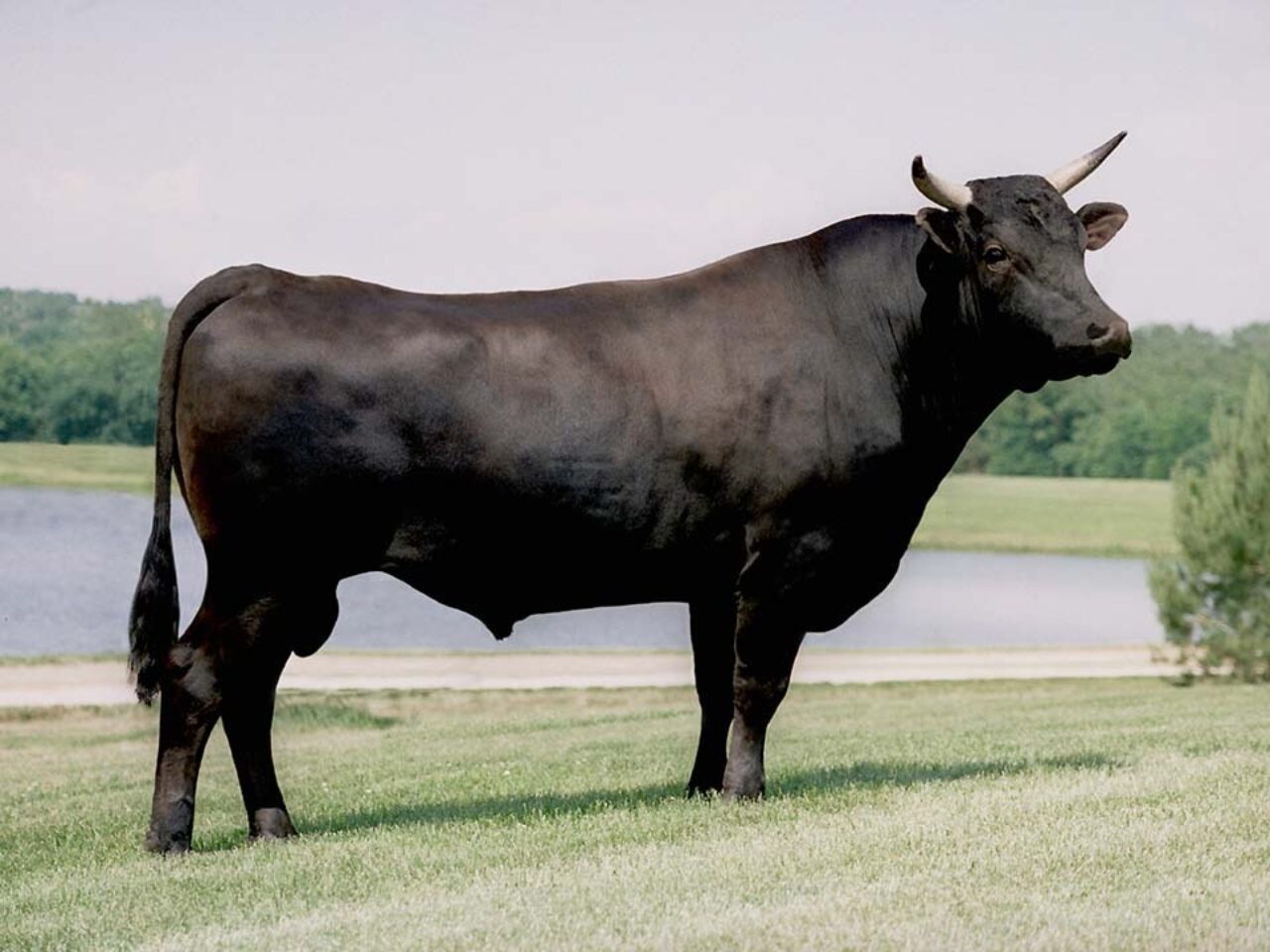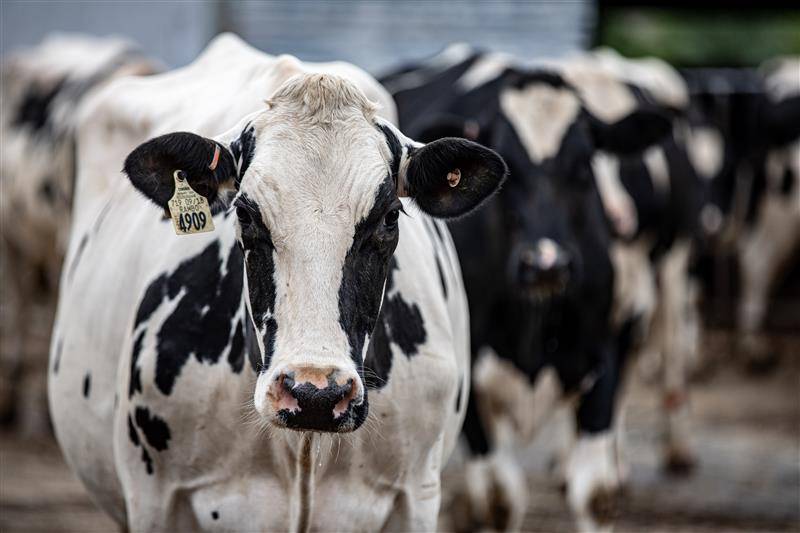Cows are one of the most important domesticated animals in the world, providing meat, milk, and other dairy products. While most cows are relatively affordable, some breeds can be incredibly expensive due to their high-quality meat or milk production, pedigree, or distinctive features.
In this article, we will discover the top 8 most expensive types of cows in the world, including the famous Wagyu cows, Holstein cows, and Belted Galloway cows.
You are reading: Discover The Top 8 Most Expensive Types Of Cows In The World

Top 8 Most Expensive Types Of Cows In The World
Wagyu cows

Wagyu cows are a breed of Japanese beef cattle that are known for their high-quality meat. The term “Wagyu” means “Japanese cow,” and the breed was originally used as draft animals in agriculture.
These cows were selected for their physical endurance, which favored animals with more intra-muscular fat cells, also known as “marbling.” This marbling provides a readily available energy source and gives the meat its distinctive flavor and texture. Wagyu cows are naturally horned and can be either black or red in color.
Wagyu cattle were first imported into the United States in 1975, and the American Wagyu Association was incorporated in Texas in 1990 to register Wagyu cattle in the U.S., Canada, and other countries. Wagyu cows are one of the most expensive types of cows in the world, with some selling for up to $30,000.
Holstein cows

Holstein cows are a breed of dairy cattle that originated in Europe, specifically in the Netherlands and the two northern provinces of North Holland and Friesland. They are known for their distinctive black-and-white or red-and-white markings and their outstanding milk production.
Holstein cows are the most common dairy breed in the United States and are widely distributed over the more fertile lowlands of continental Europe. They are large, stylish animals, with a healthy calf weighing 90 pounds or more at birth, and a mature cow weighing about 1,500 pounds and standing 58 inches tall at the shoulder.
Holstein heifers can be bred at 13 months of age, and it is desirable to have Holstein females calve for the first time between 23 and 26 months of age. Holstein gestation is approximately nine months.
Holstein dairy cattle dominate the milk production industry in the United States due to their unexcelled production, greater income over feed costs, unequaled genetic merit, and adaptability to a wide range of environmental conditions. This means more profit for the dairy producer who milks Holsteins.
Brown Swiss cows
Brown Swiss cows, also known as Braunvieh, are a breed of dairy cattle that originated in the Alpine region of Europe. They are one of the oldest dairy breeds in the world, with bones found in the ruins of Swiss lake dwellers dating back to around 4000 BC resembling the skeleton of today’s Brown Swiss cow.
Read more : 10 Types Of Orange Butterflies With Pictures And Identification Guide
Brown Swiss cows are light brown in color with a creamy white muzzle and dark nose, and dark-blue eye pigmentation which helps the breed to resist extreme solar radiation. They are one of the largest bodied dairy breeds, with a mature cow weighing 1,300-1,400 pounds and a mature bull weighing as much as 2,000 pounds.
Brown Swiss cows are known for their strong legs and feet and overall structural correctness, which means they generally have a long, productive lifespan on a dairy farm. They are also robust, a prolific breeder, long-lived, strong, adaptable, and very well-balanced in build with good hooves and limbs.
Brown Swiss cows have been bred horned and polled, when horned the horns are short and white growing dark towards the top. The milk of the Brown Swiss cow has about 4% butterfat and 3.5% protein and is suitable for making cheese.
Brown Swiss cows are one of the most popular dairy breeds in the world and have been exported to many countries. In 1990, the global population was estimated to be approximately seven million head.
Jersey cows
Jersey cows are a breed of small dairy cattle that originated on the British island of Jersey in the English Channel. They are one of the oldest dairy breeds, having been reported by authorities as being purebred for nearly six centuries.
Jersey cows are known for their high butterfat content milk, which has a characteristic yellowish tinge. They are typically light to medium brown in color, though this can range from being almost grey to dull black. Jersey cows are small in size, weighing about 1,000 pounds in maturity. They have broader faces with prominent eyes and long eyelashes, which endears this breed to many people.
Jersey cows are adaptable to a wide range of climatic and geographical conditions, and they are more tolerant of heat than larger breeds. They are excellent grazers and perform well in intensive grazing programs.
Jersey cows have been exported to many countries, and outstanding Jersey herds are found worldwide. The American Jersey Cattle Club was formed in the United States in 1868, and Jersey cows have been a popular dairy breed in the country since the 1850s.
Guernsey cows
Guernsey cows are a breed of dairy cattle that originated from the island of Guernsey in the Channel Islands.
Here are some interesting facts about Guernsey cows:
– Guernsey cows are fawn or red and white in color and are known for their hardiness and docility.
– The milk of Guernsey cows is rich in flavor, high in fat and protein, and has a golden-yellow tinge due to its high beta-carotene content.
– Guernsey cows are medium to large in size, with cows weighing up to 1,400 pounds and bulls weighing up to 2,000 pounds.
– Guernsey cows are usually horned, although polled strains have been developed.
– Guernsey cows were first recorded as a separate breed around 1700 and became a significant genetic foundation for the American dairy industry in the late 1800s and early 1900s.
– Guernsey cows have the lowest incidence of calving difficulty of any of the major dairy breeds.
– The Guernsey breed has fallen into decline in recent decades due to the dairy industry’s focus on the quantity of milk produced under confinement conditions, and pricing favoring the quantity of fluid milk over the quality of the components, such as protein and butterfat.
– Guernsey cows are known for their friendly temperament and have a prominent place in American agriculture.
Overall, Guernsey cows are a hardy and docile breed that produces high-quality milk with a distinctive golden-yellow tinge.
Ayrshire cows
Ayrshire cows are a breed of dairy cattle that originated in the county of Ayr in southwestern Scotland.
Here are some interesting facts about Ayrshire cows:
Characteristics:
– Ayrshire cows are medium-sized cattle and should weigh over 1,200 pounds at maturity.
– They are strong, rugged cattle that adapt to all management systems, including grazing.
– Ayrshire cows typically have red and white markings, with the red ranging from a shade of orange to a dark brown.
– They are known for their longevity, hardiness, and easy calving.
– Ayrshire cows are efficient grazers and noted for their vigor and efficiency of milk production.
– They are especially noted for the superior shape and quality of their udder, and their milk is ideal for the production of butter and cheese.
History:
– The Ayrshire breed originated in the county of Ayr in Scotland prior to 1800.
– During its development, it was referred to first as the Dunlop, then the Cunningham, and finally, the Ayrshire.
– The different strains of cattle were carefully crossed and selected to develop the cow we now know as the Ayrshire.
– Ayrshire cows were recognized as a distinct breed by the Highland and Agricultural Society in 1814.
– Ayrshire cows were exported to many countries, including the United States, where they have been a popular dairy breed since the 1850s.
– The number of registered Ayrshires in North America has declined significantly in the last 30 years, as the breed cannot compete with the Holstein in milk quantity produced under confinement conditions.
Read more : Discover 10 Types Of Green Beetles
Overall, Ayrshire cows are a hardy and adaptable breed that produces high-quality milk, making them a valuable asset to dairy farmers.
Brown Swiss cows
Brown Swiss cows are a breed of dairy cattle that originated in the Alpine region of Europe.
Here are some interesting facts about Brown Swiss cows:
Characteristics:
– Brown Swiss cows are light brown in color with a creamy white muzzle and dark nose, and dark-blue eye pigmentation which helps the breed to resist extreme solar radiation.
– They are one of the largest bodied dairy breeds, with a mature cow weighing 1,300-1,400 pounds and a mature bull weighing as much as 2,000 pounds.
– Brown Swiss cows are known for their strong legs and feet and overall structural correctness, which means they generally have a long, productive lifespan on a dairy farm.
– The milk of the Brown Swiss cow has about 4% butterfat and 3.5% protein and is suitable for making cheese.
– Brown Swiss cows have been bred horned and polled, when horned the horns are short and white growing dark towards the top.
– Brown Swiss cows are robust, a prolific breeder, long-lived, strong, adaptable, and very well-balanced in build with good hooves and limbs.
– The Brown Swiss breed has a double utility as they are used for dairy and beef purposes providing good milk and meat output.
History:
– Brown Swiss cows originated from the traditional triple-purpose Braunvieh (“Swiss Brown”) of the Alpine region of Europe.
– The Brown Swiss breed was selectively bred for dairy qualities only, and its draft and beef capabilities were lost.
– Brown Swiss cows were exported to many countries of the world and have been much used for cross-breeding, notably with many of the original Alpine breeds of brown cattle in Austria, Germany, and Switzerland.
– In 1990, the global population was estimated to be approximately seven million head.
– The Brown Swiss Association was established in the United States in 1880 and registers about 10,000 animals per year.
Overall, Brown Swiss cows are a hardy and adaptable breed that produces high-quality milk and meat, making them a valuable asset to dairy and beef farmers.
Belted Galloway cows
Belted Galloway cows are a traditional Scottish breed of beef cattle that derive from the Galloway cattle of the Galloway region of southwestern Scotland.
Here are some interesting facts about Belted Galloway cows:
Characteristics:
– Belted Galloway cows are known for their distinctive white belt that encircles their body, with the rest of their body being black, dun, or red in color.
– They are adapted to living on the poor upland pastures and windswept moorlands of the region and are well adapted to harsh climatic conditions, hill terrain, and rough grazing on coarse grasses.
– Belted Galloway cows are larger, milk heavier, and grow more rapidly than their parent breed, the Galloway cattle.
– They are primarily a pastured beef breed and are evolved to digest grass and hay, although they will grow on corn or grains.
– Belted Galloway cows are hardy and can be kept out throughout the winter, regardless of the weather.
– They are reared mainly for beef and may also be used for vegetation management, otherwise known as conservation grazing.
– Cattle reared on forage alone may take up to four years to be ready for slaughter, and beef from such cattle may have higher-than-usual levels of omega-3 polyunsaturated fatty acids.
History:
– Belted Galloway cows were established as a separate breed in 1921.
– The breed was developed during the 16th century in the former Galloway district of Scotland, a rugged and hilly seacoast region where hardiness was necessary for survival.
– Belted Galloway cows are the heart and purpose of the Belted Galloway Society, which was established to promote the breed, preserve its purity, and disseminate information about it.
Overall, Belted Galloway cows are a hardy and distinctive breed that is well adapted to harsh climatic conditions and rough grazing. They are primarily a pastured beef breed and are reared for their high-quality meat.
FAQS
1. What makes Wagyu cows so expensive?
Wagyu cows are the most expensive cows in the world due to their high-quality meat, which is known for its rich marbling and buttery taste. One cow can be sold for up to $30,000, and the rarest steaks can cost from $120 to over $300.
2. What is the most expensive breed of cow?
The most expensive breed of cow is the Wagyu cow, which is known for its high-quality meat and can sell for millions of dollars.
3. What is the average cost of a cow?
The average cost of a cow is between $2,000 and $5,000, depending on the breed and quality.
4. What are some other expensive breeds of cows?
Other expensive breeds of cows include Holstein cows, Brown Swiss cows, Jersey cows, Guernsey cows, Ayrshire cows, and Belted Galloway cows.
5. What are Belted Galloway cows?
Belted Galloway cows are a distinctive breed of cow with a white belt around their midsection. They are one of the most expensive types of cows in the world and are known for their high-quality meat.
6. What are miniature cows?
Miniature cows are smaller versions of regular cows and are often used for hobby farming or as pets. They can be more expensive than regular cows, with some costing up to $1,800.
Source: https://petstutorial.com
Category: Animals










